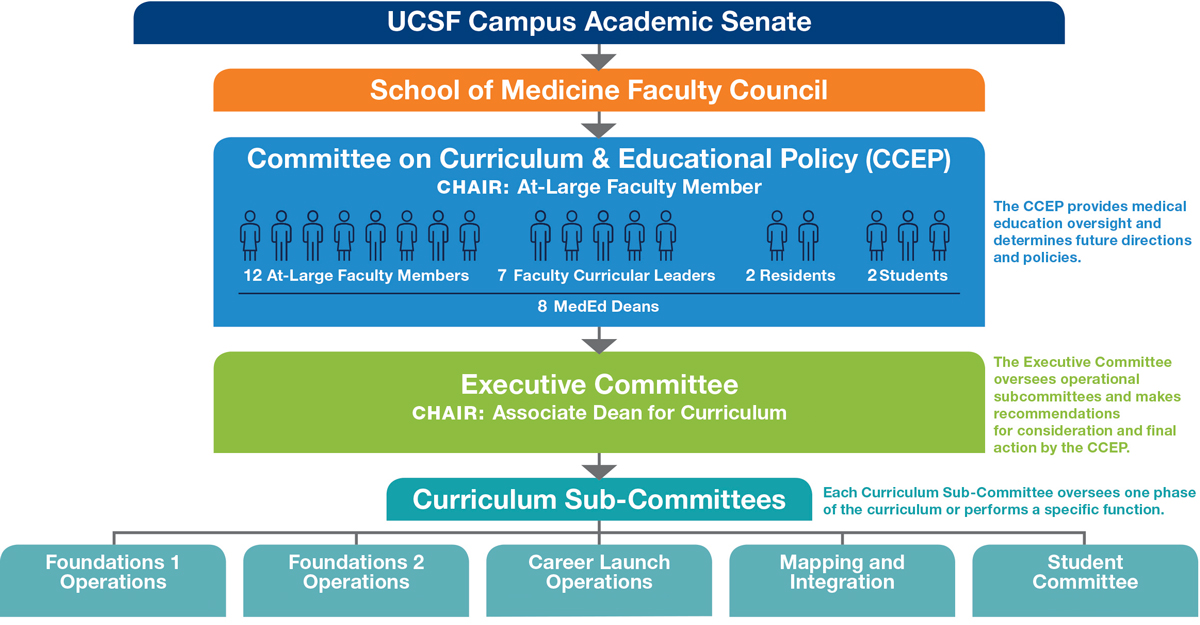Mapping and Integration Committee Charge
Updated 3/2024
Introduction to Mapping & Integration
The Bridges Curriculum is designed to train physicians who will be prepared to promote health and reduce suffering by providing equitable care for all. To achieve this goal, the curriculum includes numerous themes, topics, and disciplines in three longitudinal threads (Foundational Sciences, Clinical and Systems Applications, Inquiry Innovation and Discovery), which are taught across three curricular phases (Foundations 1, Foundations 2, Career Launch). The Mapping and Integration (M&I) Committee was originally developed by Medical Education Leadership and the Committee on Curriculum and Education Policy (CCEP) to streamline communication amongst governance committees, to promote integration across the curriculum, and to help make decisions regarding existing and new content and curricular components. Since its inception in 2017, the Bridges Curriculum has grown and evolved considerably, expanding content, and increasing focus on antiracism, anti-oppression, and social justice, among other topics. This growth has heightened the need for critical decisions regarding sequencing, timing, and depth of content delivery across the continuum.
Mapping and Integration Charge
The M&I Committee is charged by and thereby reports to the Curriculum Executive Committee. This charge document describes the roles and responsibilities of the M&I Committee.
Effective July 1, 2024, specific responsibilities of the Mapping and Integration Committee are to:
- Implement and maintain a revised and sustainable process to tag topics and content across the Bridges Curriculum.
- Implement and maintain a revised and sustainable process to map topics and content across the Bridges Curriculum.
- Implement and maintain a revised and sustainable process to steward and integrate topics and content across the Bridges Curriculum, with attention to identifying and addressing gaps and redundancies.
- Review and evaluate proposals for new curricular content or foci, or for shifting topics amongst curricular phases, and to promote optimal sequencing, timing, and depth of topics and content.
- Provide data and support for accreditation activities.
The following diagram shows the Curriculum Governance structure:

The specific LCME standards for which the Mapping and Integration Committee is responsible include:
Standard 7.1: Biomedical, Behavioral, Social Sciences
Standard 7.2: Organ Systems/Life Cycle/Primary Care/Prevention/Wellness/Symptom/ Signs/Differences/Differential Diagnosis/Treatment Planning/Impact or Behavioral and Social Factors
Standard 7.5: Societal Problems
Standard 7.6: Structural Competence, Cultural Competence and Health Inequities
Standard 7.7: Medical Ethics
Standard 8.2: Use of Medical Educational Program Objectives
Standard 8.3: Curricular Design, Review, Revision/Content Monitoring
Membership:
- F1 and F2/Career Launch Curriculum Directors (committee co-chairs)
- ACE staff representatives (including committee steward)
- TEE staff representative
- Student representative
- Foundational sciences faculty representative
- Clinical faculty representative
- AOCI Liaison
- Inquiry faculty representative
- Physician Identity Weeks faculty representative
Meetings:
The Mapping and Integration Committee will meet at least bimonthly. Committee co-chairs will regularly liaise with the Curriculum Leadership Team, the Executive Committee, and with F1, F2, and CL Ops committees.
